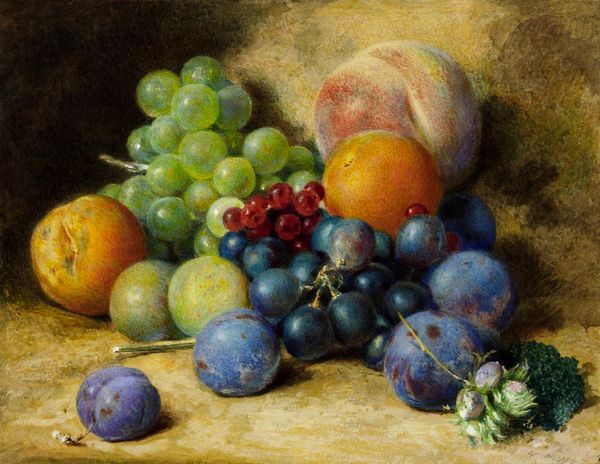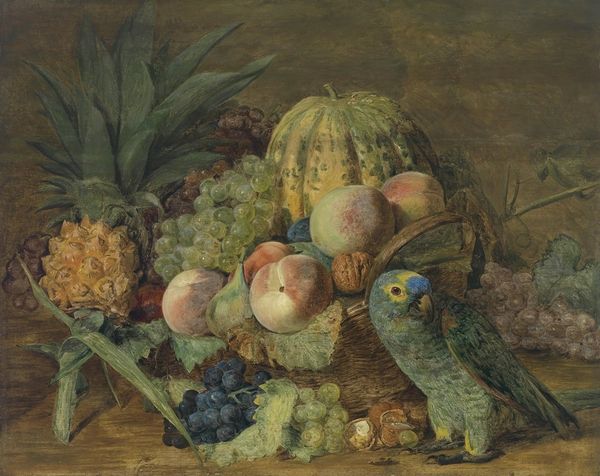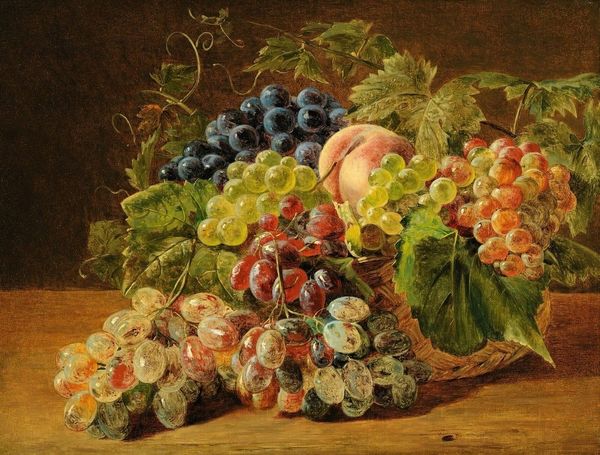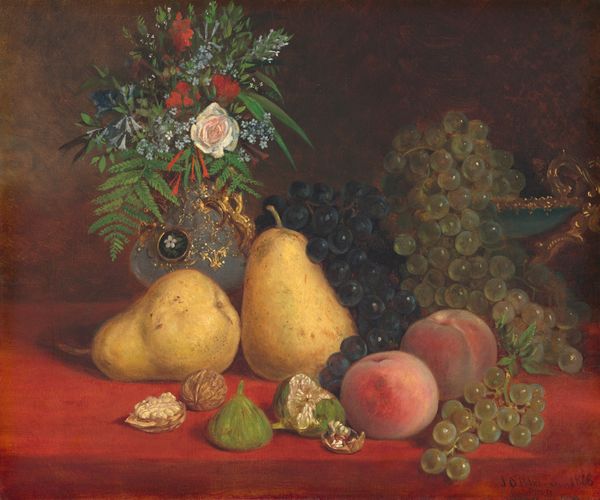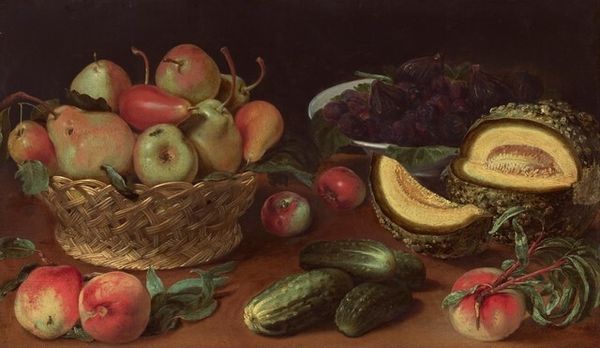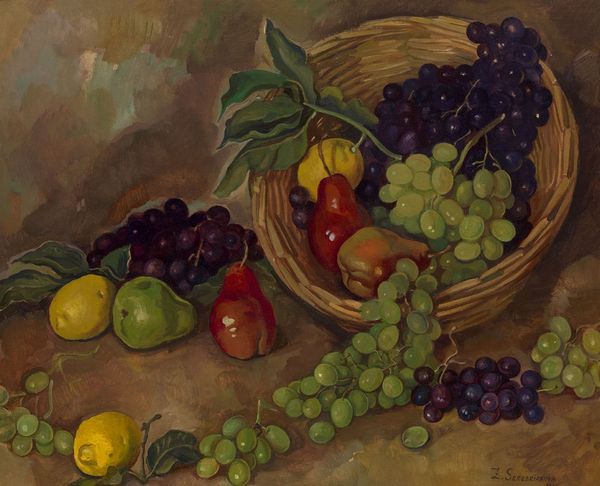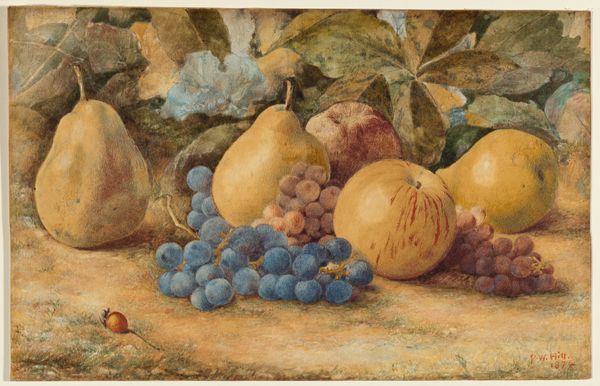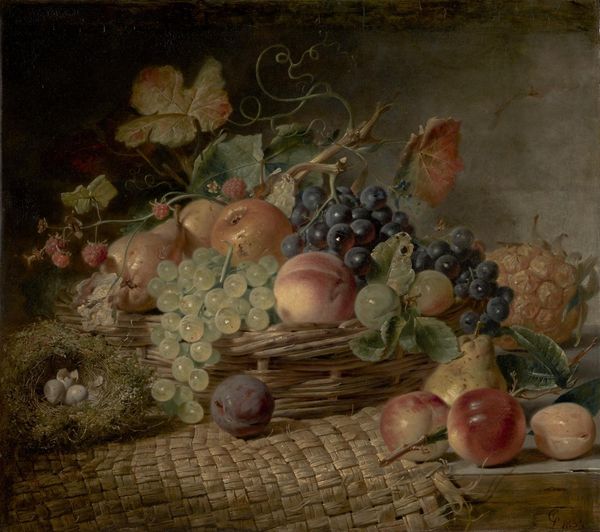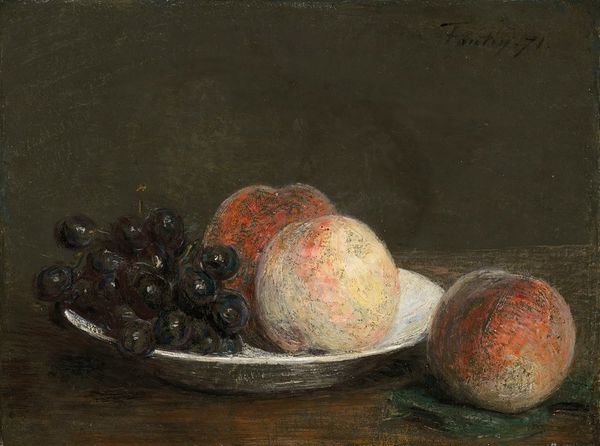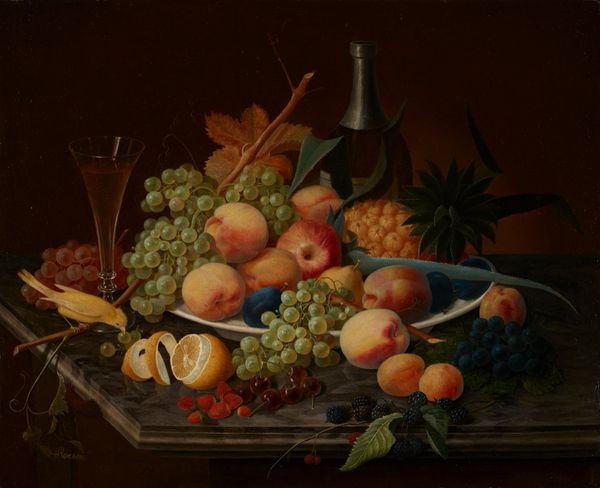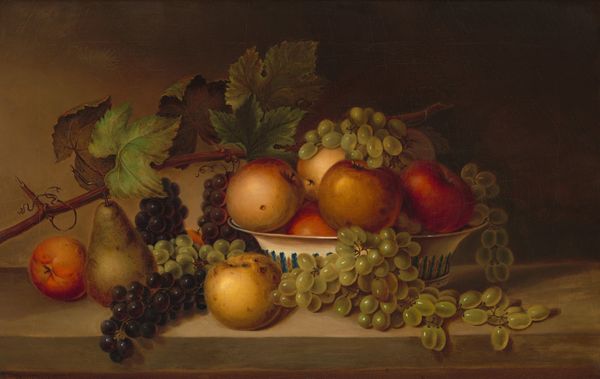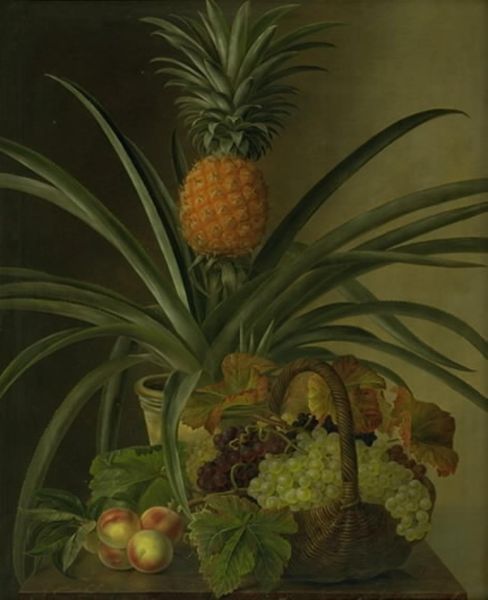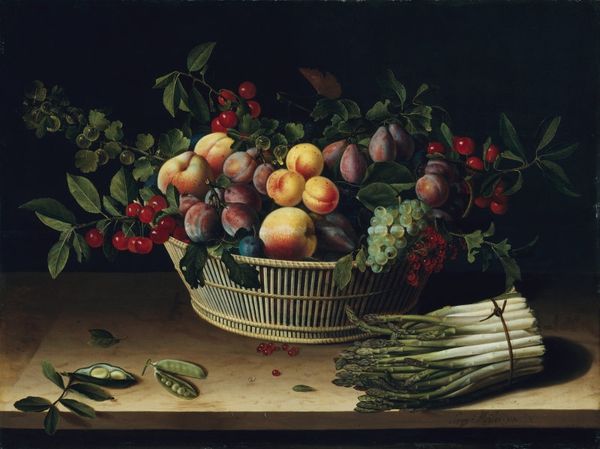
Copyright: Public Domain: Artvee
John Atkinson Grimshaw's still life was painted in England during the second half of the nineteenth century. The image depicts a pineapple, grapes, nuts and plums artfully arranged on a tabletop against a dark backdrop. Still life painting was a popular genre during this era, and one of its primary functions was to display the affluence of its commissioner. The exotic fruit on display creates meaning through cultural and historical associations. For a British audience, pineapples were a luxury item, imported at great expense from the colonies. Therefore, this painting is a demonstration of colonial power and Britain's ability to import goods from across the globe. It speaks to the vast inequalities of wealth that characterized Victorian England. To better understand this painting, it is helpful to consider the social and economic conditions of the time. Research into trade routes, colonial history, and class structures can reveal the deeper meaning behind this seemingly simple still life. Art such as this is always contingent on social and institutional context.
Comments
No comments
Be the first to comment and join the conversation on the ultimate creative platform.
